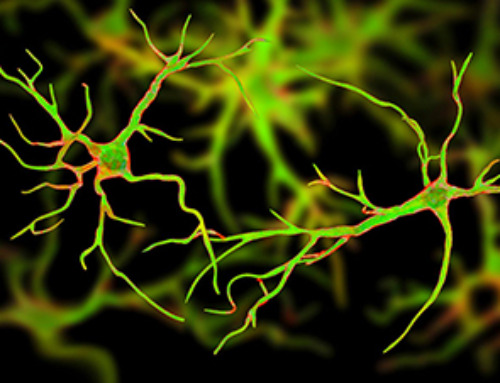A new review reveals how plant- and microbe-derived nanoparticles can power next-gen water disinfection, delivering cleaner, safer water without the environmental cost of traditional treatments.
A recent review published in Nanomaterials highlights the potential of green-synthesized nanomaterials (GSNMs) in advancing safer and more sustainable water disinfection methods. The article explores how these materials are produced, how they act against harmful microorganisms, and their environmental implications.
As the global demand for clean water grows, this review positions GSNMs as a promising alternative to conventional disinfection systems like chlorination and UV, which are increasingly challenged by microbial resistance and harmful byproducts.
Rethinking Water Treatment with Nanotechnology
Conventional disinfection methods have served the industry for decades, but have several well-known drawbacks, such as limited effectiveness against resistant strains and chemical residues.
GSNMs offer an alternative remediation strategy, using the inherent antimicrobial properties of nanoscale materials, such as silver, zinc oxide, and titanium dioxide, while avoiding toxic solvents or harsh reagents during synthesis.
Such nanomaterials are usually produced using natural agents like plant extracts, fungi, or bacteria. This “green” approach avoids hazardous waste and also frequently results in enhanced particle functionality and stability.
By relying on renewable, low-impact materials, these syntheses align closely with broader sustainability goals, potentially lowering production costs and improving environmental safety.
Significance of the Review
The review surveyed a wide range of studies on how GSNMs are synthesized, how they inactivate bacteria, and how they might be implemented across different water treatment systems.
Three synthesis routes are commonly used: plant-mediated, microbial-assisted, and biopolymer-based. Each offers unique benefits in terms of particle characteristics and ease of production.
Studies have shown that the resulting nanoparticles exhibit strong antimicrobial activity, with silver nanoparticles frequently highlighted for their efficacy even at low concentrations.
To measure efficacy, researchers analyzed results from prior studies using standard microbiological assays, including minimum inhibitory concentration (MIC) and time-kill studies.
Many of these studies reported over 99.9 % bacterial reduction within 30 minutes at concentrations as low as 10 to 20 micrograms per milliliter. Smaller nanoparticles, in particular those under 20 nanometers, were particularly effective at penetrating microbial cells and causing cellular damage.
Mechanistically, the antimicrobial action of GSNMs is driven by several factors.
Factors include direct disruption of bacterial membranes, the generation of reactive oxygen species (ROS), and the slow release of metal ions that interfere with cellular processes.
Properties such as surface charge and particle morphology also play a key role in determining how well the materials interact with microbial cells. Because these nanomaterials are synthesized without toxic reactants, many have improved biocompatibility and reduced risk to non-target organisms.
Practical Applications and Industry Implications
GSNMs could enhance water treatment technologies in several ways. They can be embedded in filters or membranes to provide contact-based microbial inactivation, offering immediate protection and resistance to biofouling.
In photocatalytic systems, GSNMs can break down organic pollutants when exposed to natural sunlight, reducing reliance on chemical additives or energy-intensive processes. These capabilities make them particularly suitable for decentralized treatment setups, including in rural or low-infrastructure areas where robust, low-maintenance solutions are needed.
The integration of GSNMs into existing treatment platforms could improve both performance and longevity, working as a cost-effective upgrade path without requiring significant changes to infrastructure.
Their ability to inactivate a broad spectrum of microbes while also addressing chemical pollutants positions them as a versatile tool in the treatment chain.
Challenges and Considerations
While the review highlights clear advantages, it also emphasizes the limitations that must be addressed before these materials see widespread adoption.
The long-term environmental impacts of GSNMs, particularly their behavior in complex aquatic environments and potential for bioaccumulation, are largely unknown and remain areas of active investigation.
More standardized testing protocols are needed to assess safety, efficacy, and life cycle impacts across varied operating conditions.
Scalability is another consideration. Although lab-scale studies show strong results, industrial-scale production must meet cost, consistency, and regulatory demands.
Further research into green synthesis at scale, along with robust risk assessments, will be essential in moving GSNMs from promising concept to practical implementation.
Conclusion: A Smart, Sustainable Opportunity
GSNMs are not a drop-in replacement for all disinfection needs, but they offer real value where sustainability, safety, and flexibility are priorities. With further development, they could fill critical gaps in the water treatment landscape, particularly for decentralized or small-scale systems that require low-toxicity, high-efficacy solutions.
For water industry professionals, researchers, and technology developers, GSNMs represent a smart intersection of nanotechnology and environmental responsibility. They may not replace conventional methods outright, but they can strengthen the sector’s ability to deliver clean water more safely and sustainably, provided future studies confirm their long-term safety and performance in real-world settings.
Journal Reference
Ferdush, J., et al. (2025). Green-Synthesized Nanomaterials for Water Disinfection: Mechanisms, Efficacy, and Environmental Safety. Nanomaterials, 15(9), 1507. DOI: 10.3390/nano15191507, https://www.mdpi.com/2079-4991/15/19/1507
News
Multifunctional Nanogels: A Breakthrough in Antibacterial Strategies
Antibiotic resistance is a growing concern - from human health to crop survival. A new study successfully uses nanogels to target and almost entirely inhibit the bacteria P. Aeruginosa. Recently published in Angewandte Chemie, the study [...]
Nanoflowers rejuvenate old and damaged human cells by replacing their mitochondria
Biomedical researchers at Texas A&M University may have discovered a way to stop or even reverse the decline of cellular energy production—a finding that could have revolutionary effects across medicine. Dr. Akhilesh K. Gaharwar [...]
The Stunning New Push to Protect the Invisible 99% of Life
Scientists worldwide have joined forces to build the first-ever roadmap for conserving Earth’s vast invisible majority—microbes. Their new IUCN Specialist Group reframes conservation by elevating microbial life to the same urgency as plants and [...]
Scientists Find a Way to Help the Brain Clear Alzheimer’s Plaques Naturally
Scientists have discovered that the brain may have a built-in way to fight Alzheimer’s. By activating a protein called Sox9, researchers were able to switch on star-shaped brain cells known as astrocytes and turn them into [...]
Vision can be rebooted in adults with amblyopia, study suggests
Temporarily anesthetizing the retina briefly reverts the activity of the visual system to that observed in early development and enables growth of responses to the amblyopic eye, new research shows. In the common vision [...]
Ultrasound-activated Nanoparticles Kill Liver Cancer and Activate Immune System
A new ultrasound-guided nanotherapy wipes out liver tumors while training the immune system to keep them from coming back. The study, published in Nano Today, introduces a biodegradable nanoparticle system that combines sonodynamic therapy and cell [...]
Magnetic nanoparticles that successfully navigate complex blood vessels may be ready for clinical trials
Every year, 12 million people worldwide suffer a stroke; many die or are permanently impaired. Currently, drugs are administered to dissolve the thrombus that blocks the blood vessel. These drugs spread throughout the entire [...]
Reviving Exhausted T Cells Sparks Powerful Cancer Tumor Elimination
Scientists have discovered how tumors secretly drain the energy from T cells—the immune system’s main cancer fighters—and how blocking that process can bring them back to life. The team found that cancer cells use [...]
Very low LDL-cholesterol correlates to fewer heart problems after stroke
Brigham and Women's Hospital's TIMI Study Group reports that in patients with prior ischemic stroke, very low achieved LDL-cholesterol correlated with fewer major adverse cardiovascular events and fewer recurrent strokes, without an apparent increase [...]
“Great Unified Microscope” Reveals Hidden Micro and Nano Worlds Inside Living Cells
University of Tokyo researchers have created a powerful new microscope that captures both forward- and back-scattered light at once, letting scientists see everything from large cell structures to tiny nanoscale particles in a single shot. Researchers [...]
Breakthrough Alzheimer’s Drug Has a Hidden Problem
Researchers in Japan found that although the Alzheimer’s drug lecanemab successfully removes amyloid plaques from the brain, it does not restore the brain’s waste-clearing system within the first few months of treatment. The study suggests that [...]
Concerning New Research Reveals Colon Cancer Is Skyrocketing in Adults Under 50
Colorectal cancer is striking younger adults at alarming rates, driven by lifestyle and genetic factors. Colorectal cancer (CRC) develops when abnormal cells grow uncontrollably in the colon or rectum, forming tumors that can eventually [...]
Scientists Discover a Natural, Non-Addictive Way To Block Pain That Could Replace Opioids
Scientists have discovered that the body can naturally dull pain through its own localized “benzodiazepine-like” peptides. A groundbreaking study led by a University of Leeds scientist has unveiled new insights into how the body manages pain, [...]
GLP-1 Drugs Like Ozempic Work, but New Research Reveals a Major Catch
Three new Cochrane reviews find evidence that GLP-1 drugs lead to clinically meaningful weight loss, though industry-funded studies raise concerns. Three new reviews from Cochrane have found that GLP-1 medications can lead to significant [...]
How a Palm-Sized Laser Could Change Medicine and Manufacturing
Researchers have developed an innovative and versatile system designed for a new generation of short-pulse lasers. Lasers that produce extremely short bursts of light are known for their remarkable precision, making them indispensable tools [...]
New nanoparticles stimulate the immune system to attack ovarian tumors
Cancer immunotherapy, which uses drugs that stimulate the body’s immune cells to attack tumors, is a promising approach to treating many types of cancer. However, it doesn’t work well for some tumors, including ovarian [...]





















